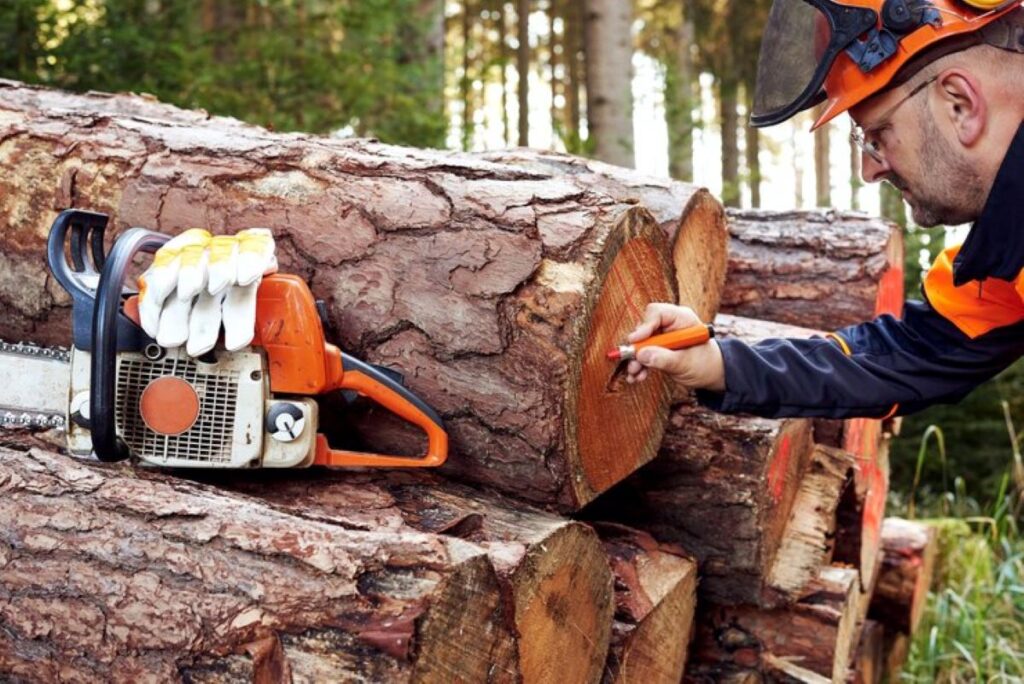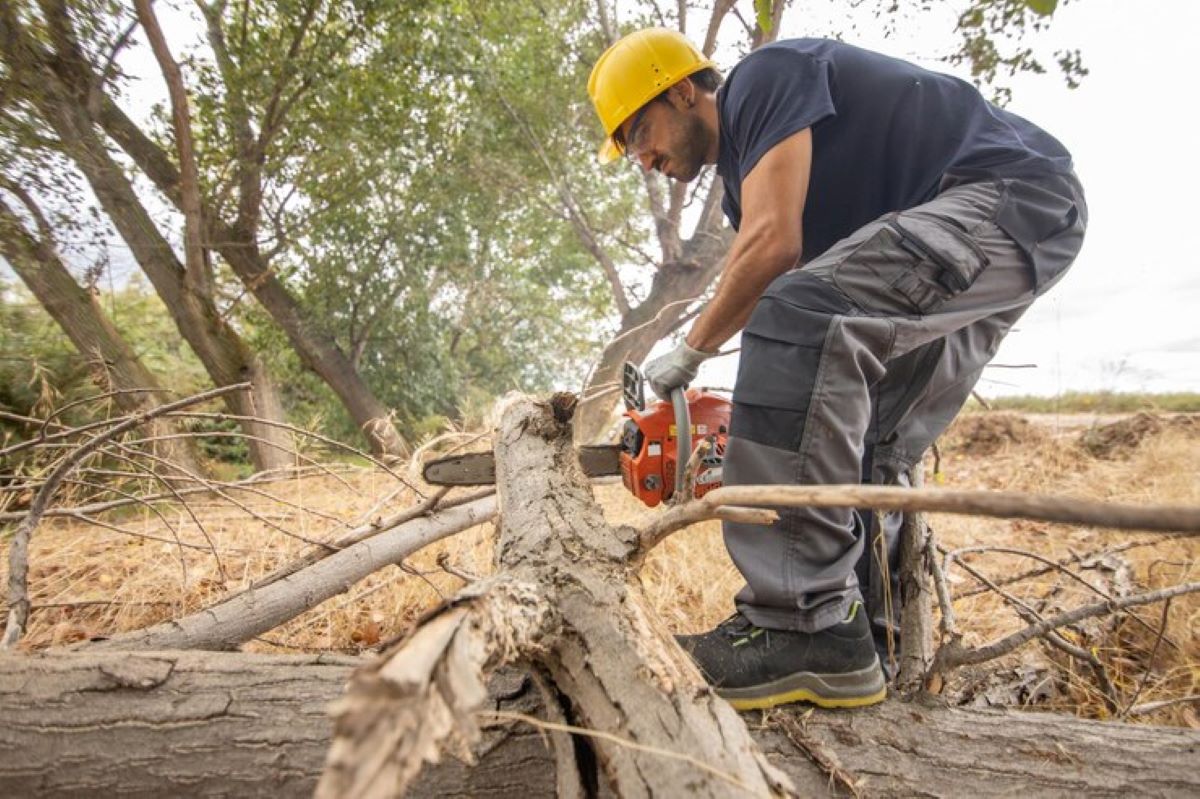Stump grinding is an essential service for homeowners and businesses in Sydney looking to remove unsightly tree stumps from their properties. Whether you’re preparing a garden for replanting or clearing space for construction, understanding the appropriate grinding depth is crucial. This guide will explore the various depths recommended for stump grinding based on different scenarios, ensuring you make informed decisions when hiring professionals.
Understanding Stump Grinding Depth
Stump grinding involves the use of specialised equipment to grind down tree stumps into wood chips, effectively removing them from sight and preventing regrowth. The depth to which a stump should be ground varies depending on the intended use of the area post-grinding. It is important to consider factors such as soil conditions, the size of the stump, and future landscaping plans.
Residential Applications
For most residential applications in stump grinding Sydney, a grinding depth of 15 to 20 cm below ground level is generally sufficient. This depth allows for the complete removal of the stump and roots, preventing any potential regrowth. Homeowners typically choose this depth when they simply want to enhance the aesthetics of their garden or yard without any immediate plans for replanting.
By grinding to this depth, you can also avoid disturbing the surrounding soil too much, which is beneficial for maintaining the health of nearby plants. Additionally, this method is often more cost-effective, as it requires less time and effort compared to deeper grinding.
Preparing for Replanting or Construction
If you are planning to replant or install new structures in the area where the stump was located, a deeper grind of approximately 30 cm is recommended. This depth ensures that all significant roots are removed, allowing for better soil preparation and drainage for new plants or construction materials.
When preparing for replanting, it is crucial to consider the type of plants you wish to introduce. Some plants may require deeper soil for their root systems, and ensuring that the stump is ground sufficiently deep will facilitate healthy growth. Moreover, for construction projects, a deeper grind can prevent future complications with foundations or landscaping.
Large Stumps and Commercial Grinders
For larger stumps, particularly those measuring between 50 cm to 100 cm in diameter, commercial stump grinders are employed. These machines are designed to grind stumps much deeper, often up to 73 cm. This capability is vital for effectively removing substantial stumps that could pose a risk to landscaping or construction efforts.
Benefits of Deeper Grinding
Grinding deeper not only removes the visible stump but also eliminates the extensive root system that can hinder future landscaping efforts. Large roots can spread out significantly, and if left in the ground, they may interfere with the growth of new plants or the stability of structures. By grinding deeply, you ensure a clean slate for whatever you plan to do next.
Additionally, deeper grinding can help prevent pest infestations. Stumps left above ground can attract insects and decay, leading to potential problems for nearby trees and plants. By grinding the stump thoroughly, you reduce the risk of such issues.
Choosing the Right Equipment
When it comes to stump grinding, the choice of equipment is crucial. Professional tree services in Sydney use commercial-grade grinders that can handle large stumps efficiently. These machines are equipped with powerful blades that can penetrate deep into the ground, ensuring that the stump is ground down to the desired depth.
It is advisable to hire professionals who are experienced in using these machines, as improper handling can lead to damage to the surrounding area or even personal injury. Always check that the service you choose has the necessary equipment and expertise to handle your specific stump grinding needs.
Factors Influencing Grinding Depth
Several factors can influence the depth at which a stump should be ground. Understanding these factors can help you make the best decision for your property.
Soil Conditions
The type of soil in your garden can significantly affect the grinding process. Sandy soils may allow for easier grinding, while clay soils can be more challenging. If the soil is particularly hard or rocky, it may require deeper grinding to ensure all roots are adequately removed. Consulting with professionals can provide insights into how soil conditions may impact your stump grinding project.
Stump Size and Type
The size and type of the stump also play a vital role in determining the appropriate grinding depth. Larger stumps with extensive root systems will require deeper grinding compared to smaller stumps. Additionally, different tree species have varying root structures, which can influence how deep the grinder needs to go to ensure complete removal.
Future Landscaping Plans
Your future landscaping plans should also dictate the grinding depth. If you plan to plant trees or large shrubs in the area, a deeper grind may be necessary to accommodate their root systems. Conversely, if you are simply looking to level the ground for a lawn, a shallower grind may suffice.
Cost Considerations for Stump Grinding
The cost of stump grinding can vary based on several factors, including the size of the stump, the depth required, and the complexity of the job. Generally, deeper grinding may incur higher costs due to the additional time and resources required. However, investing in proper stump grinding can save you money in the long run by preventing future issues with regrowth or pest infestations.

Getting Quotes from Professionals
When seeking stump grinding services in Sydney, it is advisable to obtain multiple quotes from different companies. This allows you to compare prices and services offered. Ensure that the quotes specify the depth of grinding included in the service, as this can vary significantly between providers.
Additionally, inquire about any additional services that may be included, such as site cleanup or wood chip disposal. Understanding the full scope of what is offered can help you make an informed decision and ensure you receive the best value for your investment.
DIY vs Professional Services
While some homeowners may consider tackling stump grinding as a DIY project, it is often best left to professionals. The equipment required for effective stump grinding can be expensive and challenging to operate safely. Moreover, professionals have the expertise to assess the best grinding depth based on your specific needs, ensuring that the job is done correctly and efficiently.
Hiring a professional service not only guarantees a thorough job but also provides peace of mind, knowing that the work is being carried out safely and effectively. It is worth considering the long-term benefits of professional stump grinding over the potential pitfalls of a DIY approach.
Conclusion
In summary, the depth of stump grinding in Sydney should be carefully considered based on the intended use of the area, the size of the stump, and the specific soil conditions. For most residential applications, a depth of 15 to 20 cm is adequate, while deeper grinding of up to 30 cm is recommended for replanting or construction. For large stumps, commercial grinders can effectively grind up to 73 cm deep, ensuring complete removal of the stump and roots.
When planning your stump grinding project, consult with professionals to determine the best approach for your needs. By understanding the factors that influence grinding depth and the associated costs, you can make informed decisions that will enhance the beauty and functionality of your outdoor space.
Related : Tree Stump Removal Sydney: Do You Need Council Approval?



